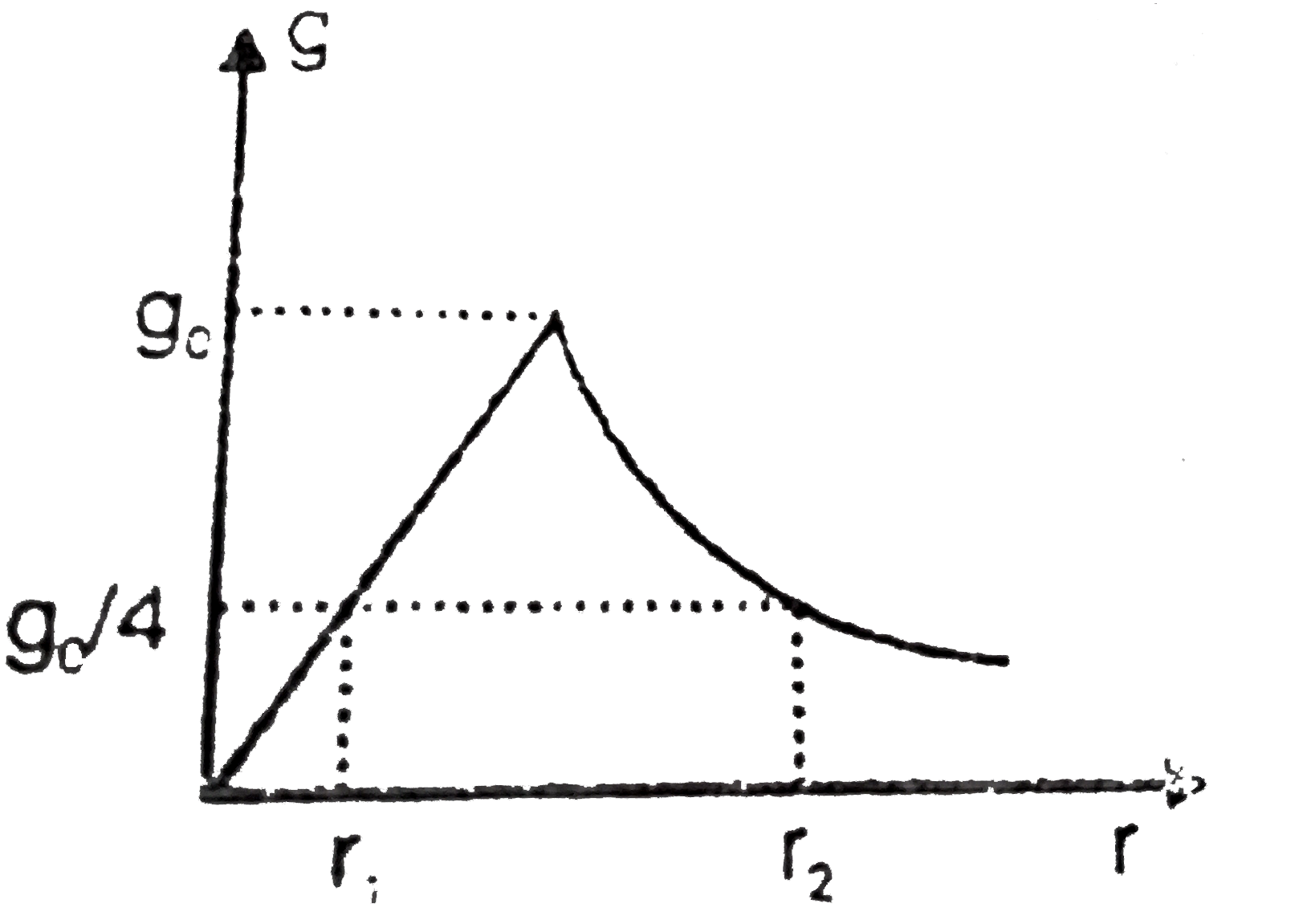The magnitude of gravitational field at distances and from the centre of a uniform sphere of radius and mass , respectively. Find the ratio of if and .
To find the ratio of the gravitational field intensities I1 and I2 at distances r1 and r2 from the center of a uniform sphere of mass M and radius R, we can follow these steps:
Step 1: Understand the formula for gravitational field intensity
The gravitational field intensity I at a distance r from the center of a uniform sphere (when r>R) is given by the formula:
I=GMr2
where G is the universal gravitational constant and M is the mass of the sphere.
Step 2: Write the expressions for I1 and I2
Using the formula above, we can express the gravitational field intensities at distances r1 and r2:
I1=GMr21
I2=GMr22
Step 3: Find the ratio I1I2
Now, we can find the ratio of the gravitational field intensities I1 and I2:
I1I2=GMr21GMr22
Step 4: Simplify the ratio
Since GM is a common factor in both the numerator and the denominator, it cancels out:
I1I2=r22r21
Step 5: Final expression
Thus, the final expression for the ratio of the gravitational field intensities is:
I1I2=r22r21
Summary
The ratio of the gravitational field intensities at distances r1 and r2 from the center of the uniform sphere is given by:
I1I2=r22r21
The gravitational field intensity I at a distance r from the center of a uniform sphere (when r>R) is given by the formula:
I=GMr2
where G is the universal gravitational constant and M is the mass of the sphere.
Using the formula above, we can express the gravitational field intensities at distances r1 and r2:
I1=GMr21
I2=GMr22
Now, we can find the ratio of the gravitational field intensities I1 and I2:
I1I2=GMr21GMr22
Since GM is a common factor in both the numerator and the denominator, it cancels out:
I1I2=r22r21
Thus, the final expression for the ratio of the gravitational field intensities is:
I1I2=r22r21
The ratio of the gravitational field intensities at distances r1 and r2 from the center of the uniform sphere is given by:
I1I2=r22r21
Topper's Solved these Questions
- GRAVITATIONBOOK - CENGAGE PHYSICS ENGLISHCHAPTER - GRAVITATIONEXERCISE - Exercise 6.3
16 Videos
- GRAVITATIONBOOK - CENGAGE PHYSICS ENGLISHCHAPTER - GRAVITATIONEXERCISE - Exercise 6.4
16 Videos
- GRAVITATIONBOOK - CENGAGE PHYSICS ENGLISHCHAPTER - GRAVITATIONEXERCISE - Exercise 6.1
13 Videos
- FLUID MECHANICSBOOK - CENGAGE PHYSICS ENGLISHCHAPTER - FLUID MECHANICSEXERCISE - INTEGER_TYPE
1 Videos
- KINEMATICS-1BOOK - CENGAGE PHYSICS ENGLISHCHAPTER - KINEMATICS-1EXERCISE - Integer
9 Videos
Similar Questions
The magnitude of the gravitational field at distance r1 and r2 from the centre of a uniform sphere of radius R and mass M are F1 and F2 respectively. Then:
View SolutionThe magnitude of the gravitational field at distance r1andr_2omthecentreofaunifromsphereofradiusRandmassmareF_1 and F_2 respectively. Then:
View SolutionThe gravitational potential energy of a body at a distance r from the centre of earth is U. Its weight at a distance 2r from the centre of earth is
View SolutionLet E1andE2 denotes gravitational field at distance r1andr2 from the axis of an infinitely long solid cylinder of the radius R. Which of the following must hold true ?
View SolutionFollowing curve shows the variation of intesity of gravitational field (→I) with distance from the centre of solid sphere(r) :
View SolutionTwo spherical nuclei have mass number 216 and 64 with their radii R1andR2 respectively. The ratio, R1R2 is equal to
View SolutionTwo loops P and Q are made from a uniform wire. The radii of P and Q are R1 and R2, respectively, and their moments of inertia about their axis of rotation are I1 and I2, respectively. If I1I2=4, then R2R1 is
View SolutionIf gravitational field Intensity is E at distance R/2 outside from then surface of a thin shell of radius R , the gravitational field intensity at distance R/2 from its centre is
View SolutionFigure shows variation of acceleration due to gravity with distance from centre of a uniform spherical planet, Radius of planet is R. What is r1−r1

View SolutionA uniform solid sphere of mass m and radius r is suspended symmetrically by a uniform thin spherical shell of radius 2r and mass m.
View Solution
